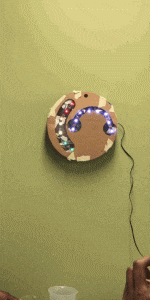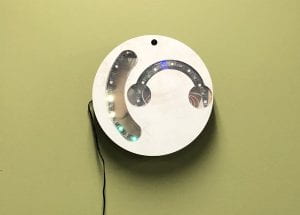Hello! This week marks the 5th week of SEED. All of the teams are nearing the home stretch of our projects.
Sixth-Order Polynomials, Hours of Debugging, and More
The first thing we did on Monday was to try to calibrate the cheap electret microphones we had ordered online and were planning to use for our device. We measured voltage readings from the microphone at different decibel levels (from an already-calibrated sound level meter), then attempted to fit the data with a best-fit line and see if it corresponded well with the actual decibel scale. We expected the data to be logarithmic because the decibel scale is logarithmic. However, we found that the actual best-fit line was a sixth order polynomial: totally not what we expected!
Later Monday, Clement and I were able to create a code that successfully causes an LED strip to light up in a color gradient according to the input from a potentiometer. At the same time, Audrey and Wilson were figuring out a way to smooth the data from the microphone calibration. However, the data smoothing process wasn’t returning accurate decibel values. Also, we were struggling with trying to get the LEDs to blink at the same time as showing different colors. However, over the next few days, with a loooooooot of debugging, we were able to solve both problems; we were thus able to get the LED code and the data smoothing code working independently.
Then came the challenge of integrating the code. At first, we thought it would be as simple as copying and pasting one code into another. We quickly found out that that was not the case. After even more hours debugging, we finally got both codes to work together! We then made a working prototype of our device with a cardboard casing around the electronics. It was the first time we saw our device work as we intended it to, which was very exciting.
We then made another prototype, this time made of laser-cut plywood for greater durability and aesthetic appeal.
This week, our team probably spent around 24 hours total just debugging our code. However, the hard work was worth it, as we have made a ton of progress toward finishing our project. Next week, we will begin user testing of our device. Namely asking users to rate the aesthetic appeal of the device, testing user response time to the flashing alert, and confirming how many devices we will need to cover the entire OEDK.
Until next week!


